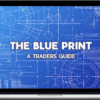Henry Chien – Learn fundamental investing from 10 years of Wall St. Experience
You get 10 years of Wall St. research experience summarized into simple concepts, tools, and tactics for you to apply NOW in today’s markets.
Saves you the pain of 100+ hours of financial courses (or 100+ hour work weeks in finance) or hours sorting through free internet material.
Get a summary of 10 years of Wall St. knowledge in five hours in this book.
This is the only guide you will need for stock investing.
What You’ll Learn In Learn fundamental investing
Introduction: Investing as a practice of change – why do stocks move like that??
Focus on rates of change (i.e. growth y/y)
Importance of forward guidance and estimates
Second derivative (improving / slowing) as key factor
Come up with a “thesis” and model an outcome
How to incorporate risk, time, and price
Fundamentals: Valuing a business: Growth vs. Asset value
Model of an investment thesis
Critical factor and value driver
Valuation using comps and history
Use of discount rates and earnings / cash flow
Estimate rates of return
Business models – how understand where a business is going?
Type of product and market
Value to customer (driver)
Vision of management team
Understand ability scale
Source of margin
Basic big picture and macro awareness
Economic cycles and types of environments (growth / inflation)
Impact of central banks (rate policy)
Key paradigms for factors and sectors
Basic Practice (how Wall St. analysts do it):
Finding information and where to look
Reading an earnings release
How to interpret a financial statement
How to understand debt and other sources of capital
Types of business models and their valuations
Using comp tables and multiples to value companies
Interpreting invest ownership of stocks
Practice of building a model and comps
Intermediate Practice (how Wall St. analysts do it):
What is reflected in price and expectations?
Catalysts or trading events and where to look for them
How to evaluate a sector for investing?
Supply / demand analysis
Competitive structure and moats
Value vs. middlemen > structure
Real TAM > value to investor
Adoption curves and penetration
S-curves and timing inflections
Secular and multi-year changes
Cyclicality and timing valuation paradigms
Advanced investing (behavioral and hedge fund tactics)
Evaluating risk of an investment
Patterns for assessment management
Interpreting volatility in liquid markets
Sources of “edge”
Set up for a long/short equity catalyst
Opportunities in risk positioning
Value investing with catalysts
Shorting flaws in a thesis







